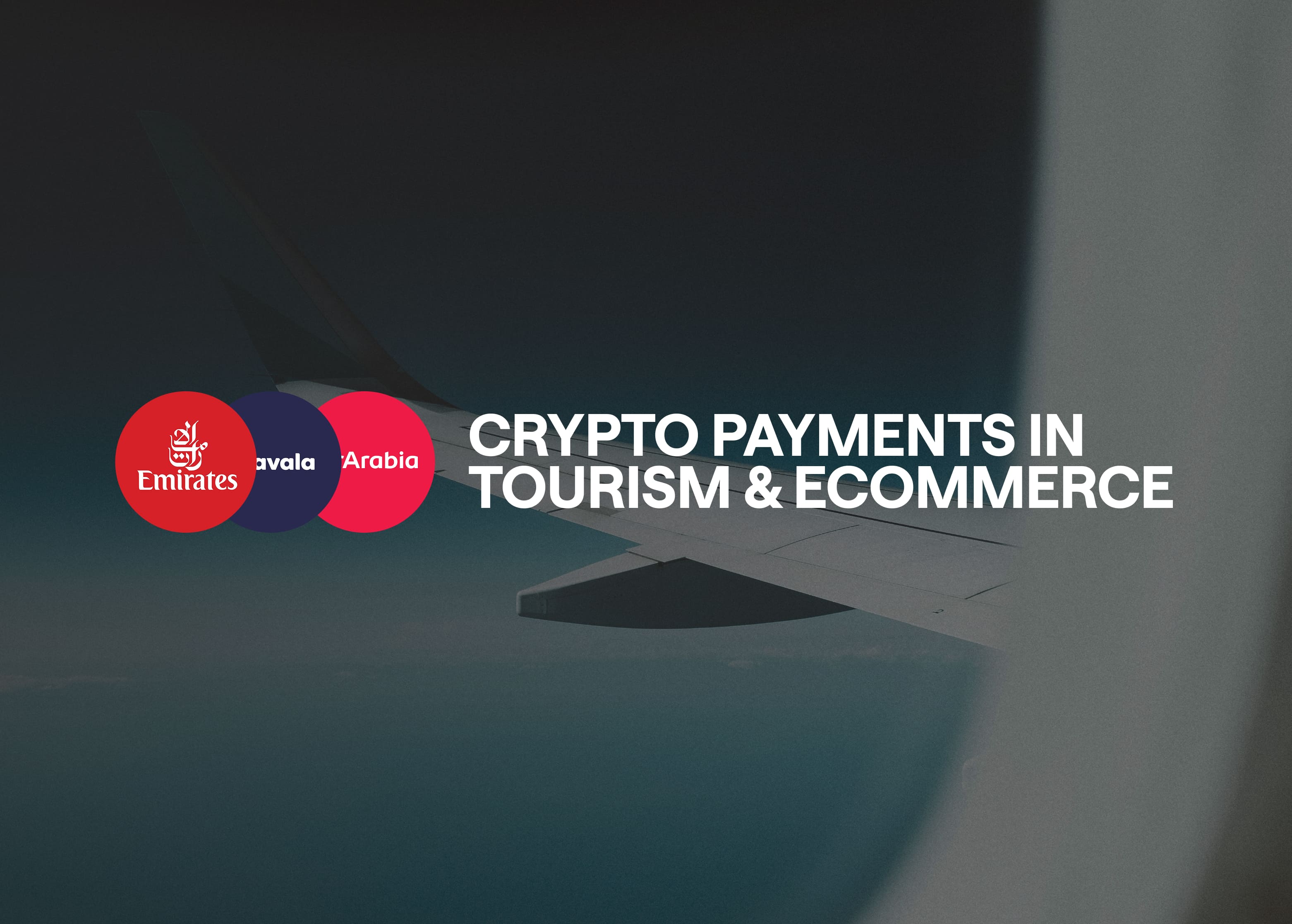
Growth Trends of Crypto Payments in Tourism and Other Economic Sectors
Cryptocurrency is no longer a novelty; it has quietly become an everyday payment rail for travellers, online shoppers and even contractors. Over half a billion people now own digital assets, and 65% of them want to pay with crypto. As regulatory clarity improves and stablecoins mature into reliable money, businesses from airlines to freelance platforms are waking up to the opportunity. This long‑form guide digs deep into the growth of crypto adoption in 2025, focusing on tourism, e‑commerce, B2B and emerging sectors. We’ll explore why adoption is accelerating, how companies like Due enable borderless payments, and what challenges still lie ahead.
Why Crypto Payments Are Gaining Traction Globally
Lower Transaction Fees and Faster Settlement
Traditional payment rails were not designed for a global internet economy. Cross‑border card transactions require intermediaries and multiple currency conversions, pushing total fees into the 2–5% range. By contrast, crypto payments often settle for 0.8–1.5% and can clear within minutes. The GoodFirms survey found that 75.3% of businesses view speedy transactions as a major benefit of cryptocurrency, while 47.3% cite high card fees as a reason to switch. Stablecoins - digital tokens pegged to fiat currency - offer additional advantages. In 2024 alone, stablecoin transfer volumes exceeded US$27.6 trillion, beating the combined transaction volume of Visa and Mastercard. They provide near‑instant settlement, 24/7 availability and near‑zero FX spreads, making them ideal for cross‑border commerce.
Attracting Crypto‑Savvy Customers
Adopters of crypto payments in tourism aren’t just cutting costs; they are winning new customers. Travala.com reports that travellers who pay in crypto spend 2.5× more per booking than fiat users and exhibit three times higher lifetime value. In a Binance‑commissioned study, 89% of travellers said they prefer airlines that let them pay in their preferred currency. These patrons also stay longer: crypto tourists’ trips average 3.5 times the length of traditional bookings. For merchants, embracing digital assets signals innovation and inclusivity, a powerful differentiator in crowded markets.
Borderless and Multi‑Currency Advantages
Businesses increasingly operate across borders. However, legacy systems rely on correspondent banks and SWIFT messages that can take days to clear. Cryptocurrency eliminates intermediaries, allowing companies to move money directly between wallets. In the GoodFirms survey, 89.6% of businesses using crypto said they do so for cross‑border payments. Digital wallets also simplify multi‑currency accounting: stablecoins let users hold digital dollars or euros and settle locally on demand. Platforms such as Due offer real‑time FX at the mid‑market rate and support payments in over 80 markets. Global accounts let users receive stablecoins instantly or settle into local currency with near‑zero fees, while their API stitches together local payment rails, liquidity markets and blockchain networks to provide real‑time settlement.
Adoption of Crypto Payments in Tourism
The travel industry is adopting cryptocurrency faster than many other sectors - crypto payments in tourism are a natural fit for a borderless category where travellers want to avoid costly currency exchanges and card fees. According to a report cited on Binance Square, 11.5% of travel agencies accepted cryptocurrency in 2024, making travel the leading sector for crypto payment trends and adoption.
Airlines and Travel Companies Accepting Crypto
Crypto demand is no longer fringe; crypto payments in tourism are now visible in booking flows across leading travel platforms and OTAs.
- +38% YoY crypto transactions across travel clients (CoinsPaid, 2025).
- US$103M in 2024 bookings on Travala.com, with 80% paid in crypto.
- +46% crypto booking volume (Jan 2023 → Jan 2024) on Travala; 82% of July 2024 bookings paid in digital assets.
- Despegar saw a strong uptrend post–Binance Pay integration; 51%+ of 2024 crypto transactions were by first-time users under 35.
- Takeaway: crypto payments resonate with younger travellers and frequent flyers.
Airlines are moving from experiments to commercially meaningful rollouts, with both checkout integrations and native stablecoin rails.
- Emirates: MoU with Crypto.com to explore Crypto.com Pay at checkout.
- Air Arabia: live acceptance of AE Coin (AED-pegged) via the AEC Wallet; near-instant settlement for travellers paying in stablecoins.
- Operational impact: on-chain rails shorten settlement windows and reduce chargeback risk versus cards.
- Private aviation: Mirai Flights reports ~75% lower payment fees after introducing stablecoin payments.
Hotels, Booking Platforms and Travel Agencies
Hotels and booking platforms are not far behind. The PhocusWire analysis found that travel and hospitality already account for 14% of all crypto payment trends and that average booking values are 30% higher than traditional payments. Travala’s users spend more and stay longer; their bookings were 2.5 times larger and lasted 3.5 times longer than bookings paid with fiat. Meanwhile, a Binance blog notes that 80% of Travala users pay with crypto and that the platform’s July 2024 revenue set an all‑time record. CoinsPaid estimates that crypto could account for 15% of all travel bookings in emerging markets by 2027.
Benefits for International Travellers
For travellers, the appeal of crypto payment trends and blockchain payments in tourism goes beyond novelty. They can avoid foreign exchange kiosks and card surcharges, pay instantly and enjoy enhanced privacy. Travellers also like the universal nature of stablecoins: whether you’re in Bali or Brussels, a USDC token still equals one dollar. PhocusWire reports that stablecoins already make up around half of crypto travel bookings, and stablecoin transaction volume now surpasses Visa by 119% and Mastercard by 200%.
The World Economic Forum notes that stablecoin supply grows roughly 28% per year, and transfer volume reached US$27.6 trillion in 2024. These trends suggest that digital dollars are becoming the backbone of travel commerce. With platforms like Due, hotels and resorts can accept stablecoins, settle into local currency or hold digital dollars for treasury management. This reduces FX costs and provides travellers with frictionless, borderless experiences.
Why Travelers Choose Crypto Payments
Crypto Payments Trends in E‑commerce and Retail
Cryptocurrency payments adoption in e‑commerce is at an inflexion point. An Edgar Dunn study projects global e‑commerce sales to grow from US$7.7 trillion in 2025 to US$11.7 trillion by 2030. While crypto currently accounts for less than 1% of online transactions, momentum is building. Roughly 15,174 businesses worldwide, including 2,300 US retailers, already accept Bitcoin or stablecoins. Consumer sentiment is shifting: 44% of surveyed shoppers expect crypto to become a mainstream payment option. According to CoinLaw’s 2025 statistics, 43% of e‑commerce platforms now integrate crypto payments, and 46% of surveyed merchants have added digital currencies to their payment options.
Shopify, Stripe and Online Adoption Examples
Large payment processors are helping merchants tap into crypto without deep technical knowledge. Examples of companies accepting crypto are proliferating. Shopify merchants can enable crypto checkout via plugins offered by Coinbase Commerce, BitPay and other gateways. Stripe now supports stablecoin payouts on selected platforms, and PayPal’s on‑ramp allows US customers to buy, sell and spend crypto. Such integrations remove friction and instantly convert digital assets to fiat at checkout, insulating merchants from volatility.
The result is a growing ecosystem of online stores, crypto payments in e-commerce spanning electronics retailers to art marketplaces, that accept USDC or BTC at minimal cost. CoinLaw notes that stablecoin transactions represent 76% of all crypto payments, while 68% of top payment providers issue crypto credit cards that offer cashback in digital assets. This suggests that consumers increasingly prefer price‑stable tokens for everyday purchases.
How SMEs Benefit from Accepting Crypto
For small- and medium-sized enterprises (SMEs), the economics of crypto are compelling. Fees on Bitcoin’s Lightning Network or stablecoin rails are far lower than card interchange, and there are no chargebacks because transactions are final.
- Usage patterns (GoodFirms): 64.9% of businesses accepting crypto in 2025 do so to pay vendors, and 58.2% to compensate contractors.
- Why they adopt: 51.8% cite eliminating high currency-conversion fees; 41.4% moved to crypto to avoid intermediaries.
- What Due enables: receive stablecoin payments and convert to local currency in real time, saving ~5–10× on processing fees.
Growth in Other Economic Sectors
Crypto payments are moving beyond travel and retail into sectors as diverse as freelance platforms, real estate, education and entertainment. The table below summarises some key crypto adoption 2025 metrics across industries.
Gig Economy and Freelancer Payments
Digital currencies offer freelancers quick access to global clients without high banking fees. After Ruul launched crypto payouts in February 2024, nearly 30% of freelance payouts were made in digital dollars within nine months. The gig economy is expected to exceed 1.2 billion workers by 2025. Crypto ensures freelancers receive funds instantly and can exchange them for local currency or hold them as a hedge against inflation. Platforms like Due facilitate contractor payouts via stablecoin rails, enabling mass payments.
Real Estate Transactions
Real‑estate deals funded with crypto have moved from novelty to niche mainstream. By mid‑2025, there were an estimated 659 million crypto users worldwide, and stablecoin transaction volume reached US$8.5 trillion in Q2 2024. These liquidity pools are spilling into property markets: 3–5% of European home listings and 7–10% of US listings accept cryptocurrency. ABFSwap, a real‑estate platform, reported that 20% of its transactions in 2024 were funded with crypto. Spain Homes completed 15 crypto home sales in October 2024, and Milo’s crypto mortgage program surpassed US$65 million. Millennials and Gen Z, who represent 94% of crypto holders, are driving this trend as they look for fast settlement and global diversification.
Education, Entertainment and Digital Goods
Some universities have quietly begun accepting tuition in Bitcoin or stablecoins. The Wharton School at the University of Pennsylvania pioneered this in 2021; the ability to pay in crypto removes currency‑conversion friction for international students. Fidelity Charitable saw crypto donations soar 12×, reaching US$331 million between 2020 and 2021, and Millennials show particularly high interest in donating with digital assets. In entertainment, blockchain is powering play‑to‑earn games and NFT‑based music releases. Artists such as Kings of Leon have released albums as NFTs, while film studios experiment with blockchain‑based royalty payments. This demonstrates that crypto is not just a payment mechanism but a catalyst for new business models.
Challenges and Barriers to Adoption
Despite the momentum, several obstacles still hinder the widespread adoption of cryptocurrency payments.
Regulation and Compliance Issues
Lack of regulatory clarity is the single largest barrier. The GoodFirms survey found that 79.2% of businesses cite uncertainties with regulations as a major challenge. Regulatory regimes vary widely across jurisdictions, creating compliance risks for global merchants. Without clear guidelines on anti‑money‑laundering (AML) and know‑your‑customer (KYC) requirements, many firms prefer to wait. Some progress is being made: the European Union’s Markets in Crypto‑Assets (MiCA) regulation took effect in 2024, and the US is considering the STABLE and GENIUS Acts to provide a framework for USD‑backed stablecoins. Such measures could give traditional businesses the confidence they need to onboard digital assets.
Volatility and Stablecoin Solutions
Price volatility is another concern. About 53.9% of surveyed businesses said that volatile crypto prices deter them from adopting digital currencies. Bitcoin’s price swings can wipe out slim profit margins if companies hold coins for more than a few minutes. Stablecoins offer a solution by pegging the value to a fiat currency and facilitating on‑chain settlement. Notably, stablecoins already represent 76% of crypto payments, and coins like USDC and USDT process over US$1 trillion per month. Businesses can accept stablecoins and immediately convert them to fiat, eliminating exposure while benefiting from blockchain efficiency.
Consumer Trust and Usability
As crypto adoption in 2025 accelerates, especially in crypto payments in e-commerce, the future of crypto payments will likely be dominated by stablecoins. Nearly 46.1% of businesses hesitate because they lack knowledge about crypto, and 21.8% cite knowledge gaps as a key barrier. There is still a perception that crypto is linked with scams, as noted by respondents in the GoodFirms survey. Limited merchant acceptance, reported by 53.9 % of participants as a challenge, further reduces consumer comfort. Education, clear UX and mainstream integrations are necessary to overcome these issues. Fintech platforms like Due help by abstracting away the complexity of wallets and blockchains. Their system offers fully non‑custodial wallets with biometric authentication and robust recovery options, ensuring users retain control while enjoying bank‑like safety.
Future Outlook – Crypto Payments in 2025 and Beyond
Stablecoins Driving Mainstream Adoption
As crypto adoption in 2025 accelerates, the future of crypto payments will likely be dominated by stablecoins. Market capitalisation for leading dollar‑backed tokens, Tether (USDT) and USD Coin (USDC), is already over US$143 billion and US$58 billion, respectively. Stablecoin supply has been growing at around 28% per year. In 2024, transfer volume hit US$27.6 trillion, surpassing Visa and Mastercard combined. Cross‑border payment volumes are expected to reach US$290 trillion by 2030, and stablecoins are well-positioned to capture a meaningful share. Clearer rules, such as the US STABLE Act and Europe’s MiCA, and large corporates launching their own stablecoins (for example, PayPal’s PYUSD) will further legitimise the space.
Integration with Global Payment Platforms
Established payment giants are embracing crypto rails. Stripe acquired Bridge, a stablecoin‑focused payments startup, signalling the seriousness with which incumbents are betting on blockchain. PayPal and Standard Chartered have launched or announced their own stablecoin programs. These developments will help digital currencies interoperate with existing banking systems.
Meanwhile, cross‑border payment specialists like Due provide real‑time FX and settlement in over 80 markets. API allows fintech companies to embed global payments into their platforms, whether for payroll, e‑commerce or marketplace payouts, and offers savings of up to 90% compared with legacy bank wires. Such infrastructure will underpin the next wave of cryptocurrency payments adoption.
Due’s Role of Fintech Innovations
Due exemplifies how fintech innovators can bridge traditional finance and the crypto economy. The London‑based start‑up recently extended its seed round to US$7.3 million to build a stablecoin API. Its platform offers borderless accounts that let users send and receive funds directly between local currencies and stablecoins, as well as an embeddable API for fintech companies to settle global transactions in real time. Due connects local rails, liquidity markets, and blockchains to deliver instant, fair-FX transfers in 80+ markets—plus EURC→EUR SWIFT to 150+ countries, instant SEPA payouts across Europe, USDC→USD SWIFT, USDC→USD ACH, and EURC→EUR SEPA. By removing the need for multiple bank accounts or regulatory setups, Due turns global treasury management into a simple API call.
FAQ — Crypto Payments Across Sectors
What industries accept cryptocurrency payments?
Crypto payments are spreading across tourism, e‑commerce, cross‑border B2B, the gig economy, real estate, education and entertainment. In travel, about 11.5% of agencies accept crypto payments and platforms like Travala process 80% of bookings in digital assets. In e‑commerce, 43% of platforms integrate crypto payments, while 44% of businesses use digital currencies for B2B transactions. In the gig economy, 30 % of freelance payouts on Ruul occur in digital dollars. Real estate adoption ranges from 3% to 10% of listings accepting crypto. Universities, online games and even film producers are experimenting with digital asset payments.
Is crypto being adopted in tourism?
Yes, tourism is one of the earliest adopters of cryptocurrency. Crypto bookings grew 38% year‑on‑year, according to CoinsPaid. Travala.com reports that 80% of its bookings are paid in digital assets and that crypto travellers spend 2.5× more per booking. Stablecoins already comprise around half of crypto travel bookings, and travellers paying with digital currency tend to stay longer and generate higher margins.
Which e‑commerce companies accept cryptocurrency in 2025?
Thousands of merchants accept crypto payments through gateways like Binance Pay, Coinbase Commerce, BitPay and Due. Major processors such as PayPal and Stripe have integrated stablecoin rails. Over 15,000 businesses accepting crypto in 2025, such as Bitcoin or stablecoins, and 43% of e‑commerce platforms offer crypto checkout. Retailers range from electronics stores to luxury fashion houses; many offer discounts or rewards for paying with digital assets.
What are the benefits of crypto payments for businesses?
Crypto payments reduce transaction fees, eliminate chargebacks and enable instant settlement. Businesses using crypto can pay suppliers and contractors across borders without intermediaries; 89.6% of crypto‑using firms in the GoodFirms survey employ digital currencies for cross‑border payments. Lower fees were a key adoption driver for 47.3% of respondents, and faster settlement appealed to 75.3%. Stablecoins also provide price stability and can be converted into local currency instantly using platforms like Due.
What challenges slow down crypto payment adoption?
Regulatory uncertainty is the biggest hurdle - 79.2% of businesses see unclear rules as an obstacle. Price volatility deters 53.9% of firms, while limited understanding and trust keep many consumers on the sidelines. As regulatory frameworks develop and stablecoins become more mainstream, these barriers are likely to diminish. Businesses can mitigate risks today by accepting stablecoins and using payment providers like Due that offer compliance, volatility hedging and user‑friendly interfaces.
- Triple-A – Cryptocurrency Ownership Data
- PYMNTS – 2025 Chainalysis Charts 49% Growth in North American Crypto Adoption
- PhocusWire – Cryptocurrency Users Spend More on Travel
- Cointelegraph – CoinsPaid Travel Payments Surge 38% YoY
- Binance Square – Tourism Crypto Adoption
- Binance Blog – Innovation in Crypto Payments
- Emirates – MoU with Crypto.com Pay
- Edgar Dunn – The Rise of Cryptocurrency in Global E-commerce
- CoinLaw – Crypto Payments Industry Statistics
- GoodFirms – Cryptocurrency Adoption in B2B Payments
- Stablecoin Standard – Rethinking Cross-Border Payments in 2025
- World Economic Forum – Stablecoins on the Rise
- Ruul – Impact of Crypto Payments on Freelance Earnings
- CoinsPaid Media – Crypto Real Estate 2025: $1B in Deals
- Crypto for Innovation – Three Ways Universities Are Using Crypto





